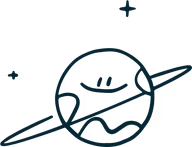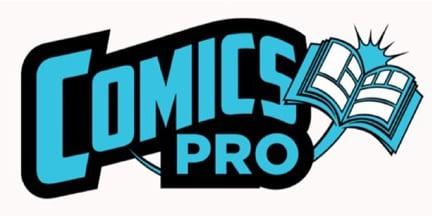If you click on a link and make a purchase we may receive a small commission. Read our editorial policy.
DC's Justice League of America didn't just set the tone for the DCU, it gave the world the Marvel Universe, too [Back Pages]
This month sees the 65th anniversary of DC's Justice League of America #1, the first standalone title for the superhero team that changed everything

Popverse's top stories
- How Babs Tarr and a vibrator inspired Critical Role's new character Tyranny, according to Whitney Moore
- Watch: The Walking Dead creator Robert Kirkman kept the surprise ending of the comic not only from fans, but also TWD showrunner Scott Gimple
- DC is using its Absolute line to quietly set the stage for Vertigo Comics’ return in 2026
“Just imagine!” yelled a house ad appearing throughout DC’s comic book line back in 1960. “The mightiest heroes of our time… Superman! Batman! Flash! Green Lantern! Wonder Woman! Aquaman! J’Onn J’Onzz — Manhunter from Mars! … have banded together as the Justice League of America to stamp out the forces of evil wherever and whenever they appear!” The team’s adventures — or, as the ad put it, the “thrilling exploits of these famous champions” — would appear in the Justice League of America comic book series, which debuted 65 years ago this month and changed pop culture forever.
The first issue of Justice League of America hit stands on August 25 1960, or thereabouts — on-sale dates for newsstand titles are notoriously vague and far from rigorously enforced at the time; August 25 was the officially announced date, however — cementing the success of DC’s premiere superhero team, which had first appeared a handful of months prior. From today’s perspective, it seems a no-brainer that bringing all of DC’s big name characters together would translate into an easy best-seller, but that wasn’t the case at the time… and the success of the concept was big enough that it led to the foundation of the Marvel Universe.
Yes, you read that right: the Marvel Universe.
From Society to League: the revival of DC Comics’ premiere superhero team made some changes

In many ways, the origins of the Justice League are remarkably straightforward. Encouraged by the sales success of revivals of the Flash and Green Lantern in 1956 and 1959 respectively, DC editor Julius Schwartz decided to go bigger to test the strength of what looked as if it could be a full-scale superhero trend — he wanted to bring back the Justice Society of America, DC’s first-ever superhero team… but, as with the Flash and Green Lantern, this time, things would be different.
It wasn’t simply that the new Justice Society would have a different name — Schwartz reportedly believed that ‘league’ felt younger than ‘society,’ explaining in a 2001 interview, “it [was] a more familiar word to young readers, like the National League, American League” — but that the format of the series would be different, as well. Whereas the majority of Justice Society stories from the original run were anthology stories of solo heroes being told in a shared setting to other heroes, the Justice League was purposefully intended to be an ongoing team-up of the publisher’s active superhero characters, ideally acting as an advertisement for their individual appearances.
The concern of reviving the Justice Society as the Justice League was equally simple: given that the Justice Society had been cancelled due to low sales less than a decade earlier — their last appearance was in 1951’s All-Star Comics #57 — did this new generation of readers even want to see the characters work together in the first place?
After the League, more Brave and Bold heroes entered the DC Universe

The answer was an immediate yes.
As was then traditional at the cautious publisher, the Justice League of America didn’t immediately launch in its own title; instead, the concept debuted in 1960’s The Brave and the Bold #28 in February 1960, following up on a series of stories featuring the original Suicide Squad. (They weren’t supervillains; that twist didn’t appear until the concept was revived in the 1980s.) Unlike the Suicide Squad — or the series that followed the Justice League in the anthology series, Cave Carson Adventures Inside Earth — the League didn’t stick around in The Brave and the Bold for long, however; sales were so strong that, after just three appearances, the team was promoted to its own series, which would go on to become one of DC’s top-sellers in short order.
To put that in some context, Justice League of America was the first ever concept to graduate from The Brave and the Bold to its own series, and following the launch of that series, the publisher began to heavily lean into the superhero genre once again, reviving Hawkman, the Atom, and other pre-existing characters while also creating brand-new superteams to thrill readers, including the Teen Titans and the Doom Patrol. The Flash might have been the harbinger of the Silver Age of superhero comic books, but it was the success of the Justice League of America that convinced DC to fully embrace the idea.
From the DCU to a new world outside your window, all thanks to a golf game
“I have a standard gag,” Schwartz told the Pittsburgh Post-Gazette in a 2001 interview, “that the Justice League not only saved DC Comics, it saved Marvel Comics too.”
He’s not entirely wrong. The apocryphal story, as related in multiple retellings of the story including Sean Howe’s 2012 book Marvel Comics: The Untold Story, is this: at some point in 1960, DC co-owner Jack Liebowitz was golfing with Martin Goodman, who owned one of DC’s competitors, Timely Comics. Liebowitz couldn’t help but boast about the sales success of his newest title, Justice League of America. Goodman, so the story goes, returned to the office after the game with one simple demand from his editor: I want my own team of superheroes. Thus, said editor — whose name was Stan Lee — did what he was told, and the Fantastic Four was born... leading to the creation of what would, in short order, become known as the Marvel Universe.
It’s unknown who won the golf game.

It’s a fun story, and one that arguably undersells the contributions of Lee and especially Jack Kirby in creating the FF. Sure, you can look at the cover of Fantastic Four #1 and see similarities for that first Brave and the Bold cover featuring the Justice League of America — the heroes coming from the edges of the page towards a monster, with some struggling to free themselves from its clutches — but the Fantastic Four was anything but a carbon copy of the League, and to argue otherwise is to devalue both comics, and both concepts. (The League wouldn’t be able to survive long on Yancy Street, and there’s no way Reed, Sue, et al wouldn’t find some way to run afoul of Despero, Felix Faust or the Crime Syndicate before too long.)
Nonetheless, it’s a story that makes perfect sense from a business perspective. Because, whether it was at DC or Marvel, the success of the Justice League of America proved to the bean counters that readers’ interest in superheroes wasn’t just a momentary fad, or something that applied only to science fiction stories dressed up in colorful new union suits. The Justice League of America proved that fans wanted to read about superheroes doing superhero stuff, and as a result, it was the team — and the series! — that changed the course of comic books and, from everything that came from that, of pop culture as a whole, just by demonstrating how inventive, ridiculous, and just plain fun this stuff could be.
65 years ago this month, one comic book launched that would have such an impact, the world would change as a result. Just imagine.
Get ready for what's next with our guide to upcoming comics, how to buy comics at a comic shop, and our guide to Free Comic Book Day 2025.
Follow Popverse for upcoming event coverage and news
Find out how we conduct our review by reading our review policy
Let Popverse be your tour guide through the wilderness of pop culture
Sign in and let us help you find your new favorite thing.
















Comments
Want to join the discussion? Please activate your account first.
Visit Reedpop ID if you need to resend the confirmation email.